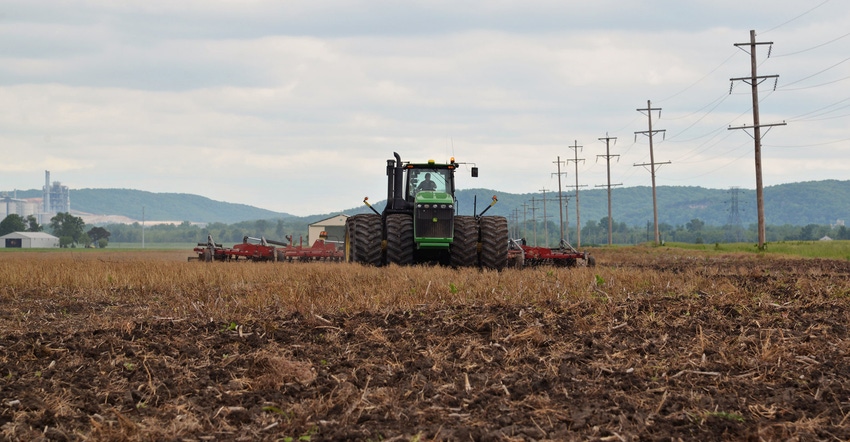April 23, 2019

Spring is in the air, and spring planting is right around the corner. When it comes to planting, having a set schedule and list leading up to key dates will ensure extra time can be devoted to any unexpected challenges that may arise. To help you proactively prepare for the 2019 planting season, here are four helpful steps to keep in mind.
1. Prep the soil. Healthy soil is the first step to a successful crop. Understanding what nutrients your soil needs can help you make informed fertilizer and crop protection decisions. Soil samples are a helpful resource when determining any possible restrictions or advantages you may be working with.
If cover crops were planted in the fall or if spring tillage is in the plan, be sure the soil is ready prior to going into the field. Minimize soil compaction by not working soil that’s too wet, and consider options to avoid equipment that’s too heavy.
2. Check seed’s genetic potential. No two fields are exactly the same. To ensure the right plan is in place, a variety of factors need to be considered, including what type of seeds, fertilizer and crop protection products to use.
“From active ingredient rates and color to application rates, there are a variety of things to consider when choosing the right seed treatment blend,” says Blake Murnan, agronomist and entomologist, and product development manager for West Central Distribution. “We’ve developed a customized service that is the first to offer personalized combinations of seed treatment blends. Each blend is designed to match specific needs, and you can avoid mixing errors and jug cleaning.”
With this service, seed dealers and retailers can work with growers to choose seed treatment products, active ingredient rates, color, polymer and selected application rate to build a more precise seed treatment blend. West Central’s STI Customized blending service personalizes combinations of seed treatment products from manufacturers like Nufarm, Bayer CropScience, Valent USA and other affiliated suppliers.
3. Form a fertilizer strategy. Creating a solid fertilizer strategy can help seeds reach their full potential. With the right strategy, seeds can have the appropriate time to reach maturity before projected harvest dates. It can also ensure that necessary nutrients are readily available in the soil.
Determine what steps need to be taken to ensure the proper amount of macro- and micronutrients by reviewing the test results of soil samples taken during soil preparation. Depending on the results from those samples, an in-furrow application of starter fertilizer may be necessary.
“Many people are dealing with cold, wet soils, so a starter fertilizer can be a beneficial tool for them,” Murnan says. “If you are hoping to add a starter fertilizer to your lineup, search for a product that can help enhance the development of emerging seedlings. Paralign by West Central contains key plant nutrients and an advanced enzyme that enhances the plant’s natural nutrient uptake process, enhancing plant growth and root development and correcting nutrient deficiencies.”
In addition to determining fertilizers to use, establishing a smart crop protection plan early can help minimize issues during the season. When establishing your plan, be sure to take geography, weather conditions and your farm’s history of pests, weeds and diseases into consideration.
4. Prepare equipment. Before you start planting or fertilizing your fields, take time to check all your spring equipment. Things to check include microtubes, splitters and pumps on all fertilizer equipment. Be sure that all equipment is free of old residue. A dirty or clogged nozzle could lead to uneven or improper distribution of a product.
It is also important to inspect the planter to ensure all parts are performing optimally and to replace any worn parts. Make sure planter attachments, including in-furrow fertilizer equipment, are clean and working properly as well.
During your check, take some time to perform a safety check to confirm that all lights and safety systems operate correctly. This should be done before beginning any tasks. You can also take this time to ensure that all electronics and technology used on their farm are updated.
With these four steps being completed ahead of time, the season will begin with strong level of confidence and with the potential for a great harvest come fall.
Source: West Central Distribution, which is responsible for the information provided and is wholly owned by the source. Informa Business Media and its subsidiaries aren’t responsible for any of the content contained in this information asset.
You May Also Like




